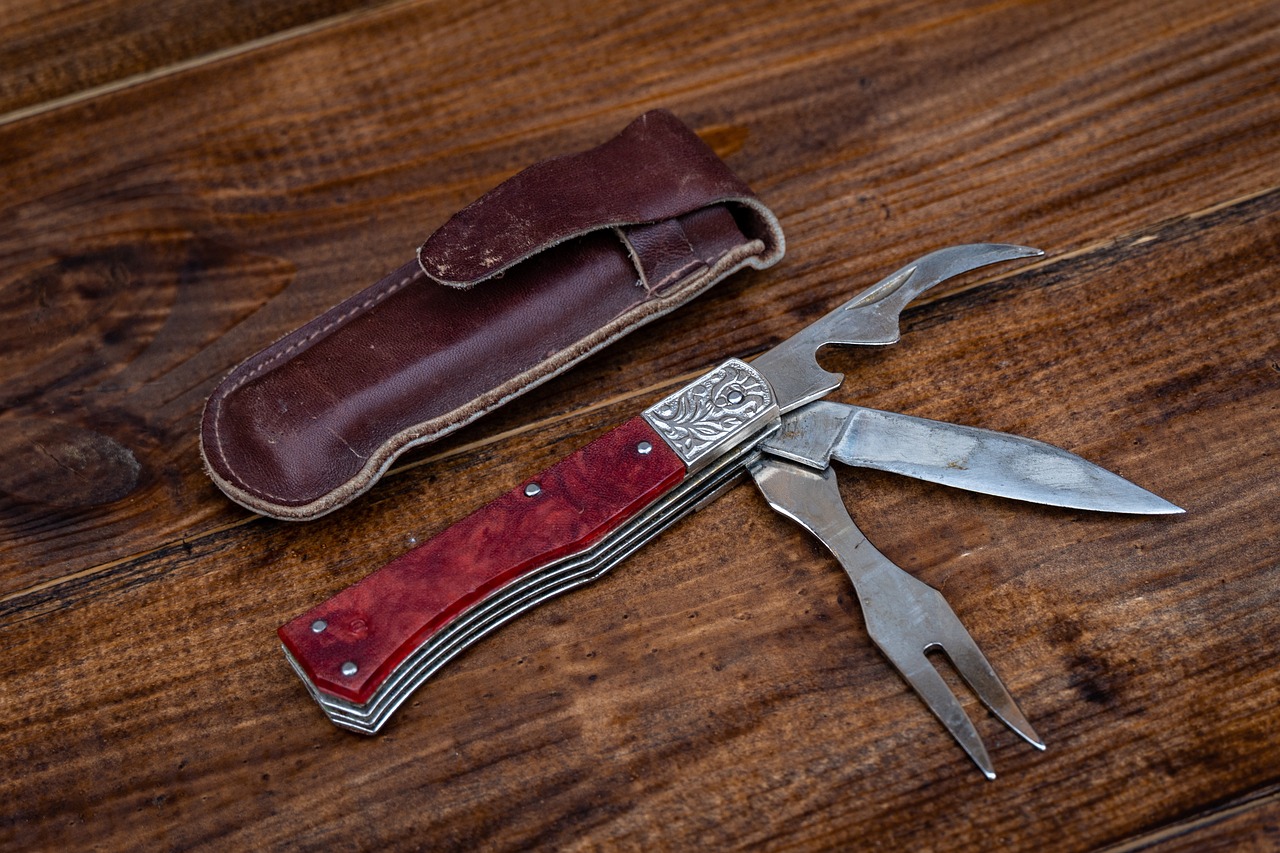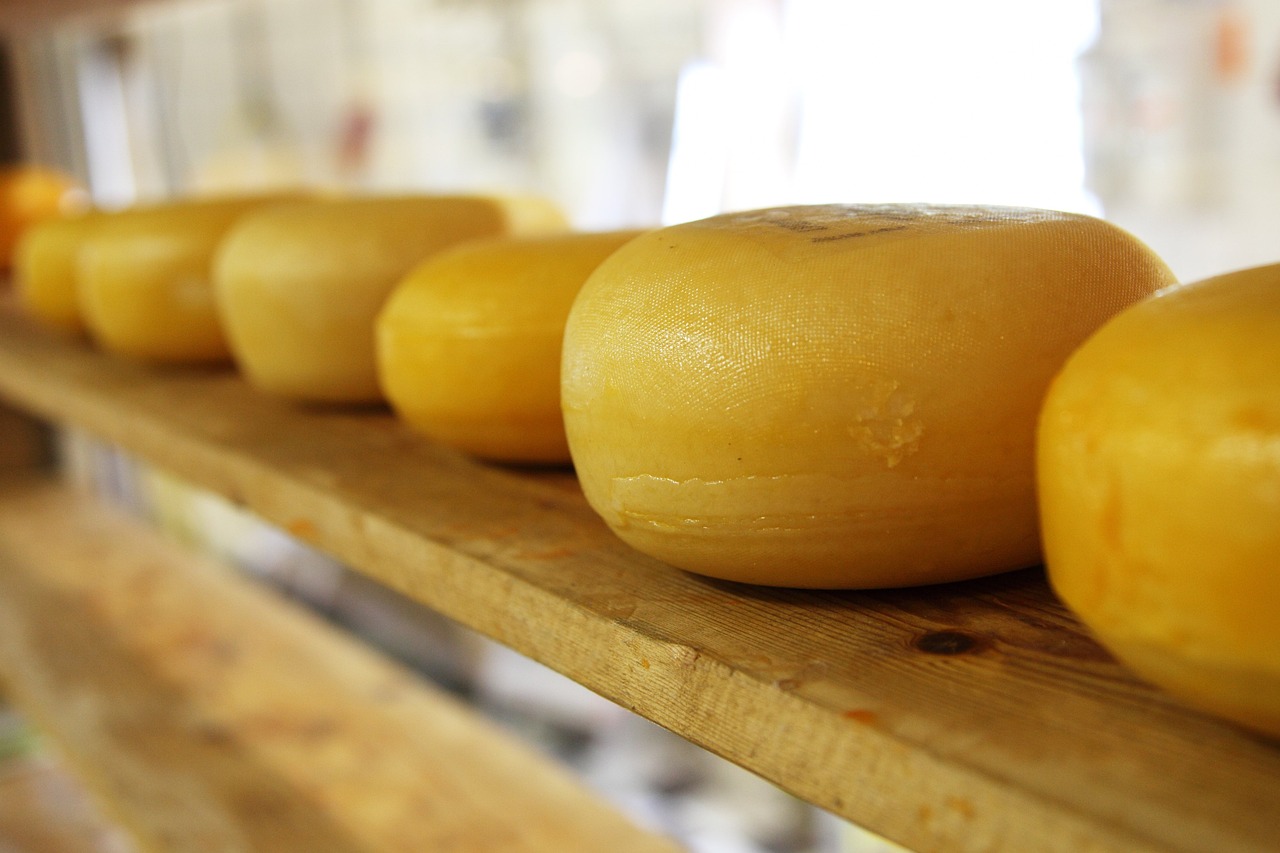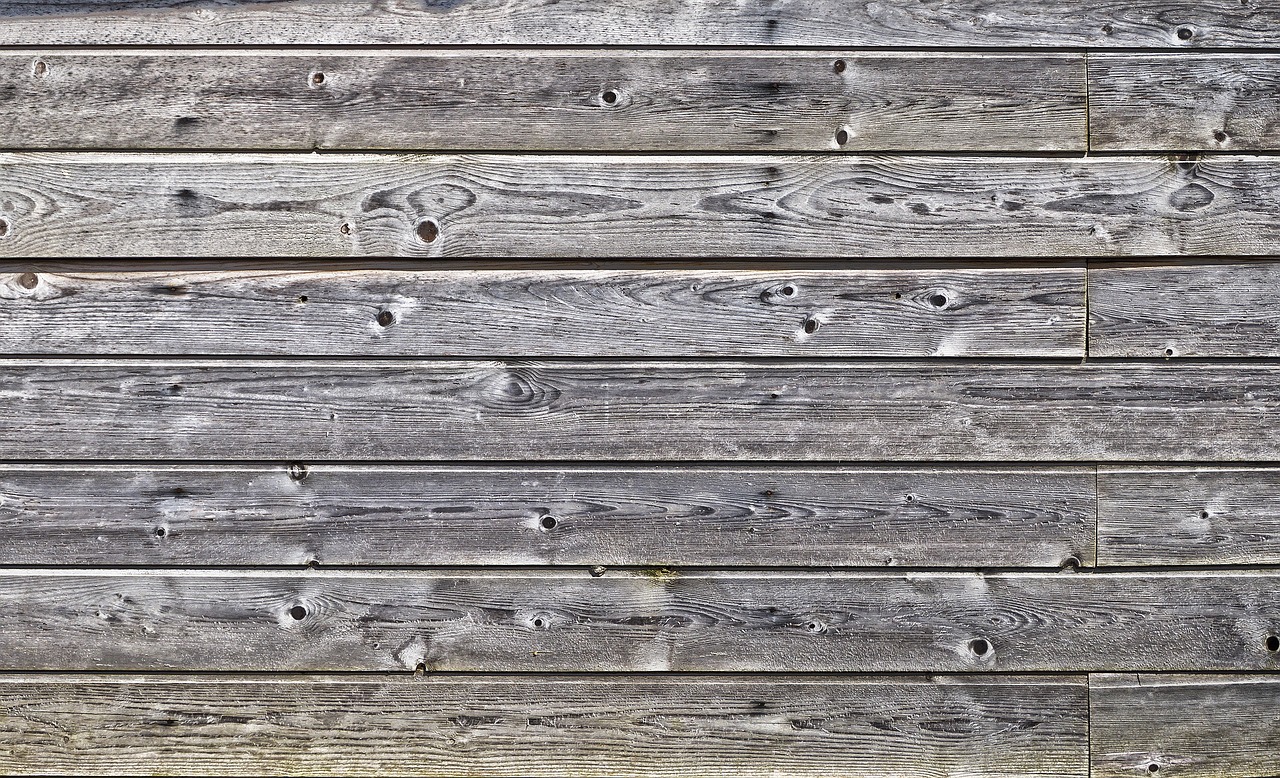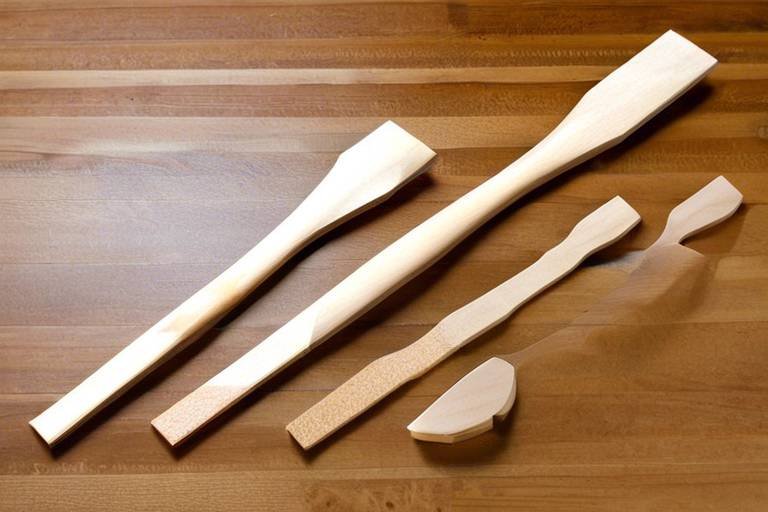Innovative Uses for Wooden Dowels
Discover the versatile applications of wooden dowels in various projects, from crafting to home improvement. These humble wooden sticks are not just for holding things together; they can be your best friend in a multitude of creative and practical endeavors. Whether you're a DIY enthusiast, a seasoned craftsman, or just someone looking to spice up your home decor, wooden dowels offer endless possibilities. Imagine transforming a simple dowel into a stunning piece of furniture or a unique decorative item that draws the eye. This article explores creative ideas and practical uses that can inspire your next DIY endeavor.
Wooden dowels are essential in crafting, providing structural support for various projects. They can be found in countless DIY projects, from making sturdy frames to creating intricate models. If you've ever thought about diving into the world of crafting, wooden dowels can serve as your backbone. For instance, consider the joy of creating your own picture frames or toy organizers using dowels. The beauty of these projects lies in their simplicity and the satisfaction of building something with your own hands. Plus, they can easily be customized to fit your unique style and preferences.
In furniture construction, wooden dowels serve as strong joints, ensuring durability and stability. When it comes to building that perfect bookshelf or coffee table, dowels can provide the strength you need without the bulk of traditional hardware. Learning how to incorporate dowels into your furniture designs can give your creations a professional finish that will impress anyone who steps into your home. Imagine the pride of saying, "I made this!" while pointing to a beautiful piece of furniture that you crafted yourself.
Understanding different joint techniques using dowels can elevate your woodworking skills. There are various methods to create strong and seamless connections in your projects. For instance, the butt joint is simple yet effective, while the cross dowel joint offers superior strength for larger projects. Each technique has its own set of advantages, and mastering them can significantly enhance the quality of your work. Here’s a quick overview of some common joint techniques:
| Joint Type | Description | Best Use |
|---|---|---|
| Butt Joint | Two pieces joined at their ends. | Simple frames or light furniture. |
| Cross Dowel Joint | Utilizes a dowel inserted perpendicularly. | Heavy-duty furniture. |
| Doweling Technique | Aligns dowels for a strong connection. | Any project requiring strength. |
Using doweling jigs can simplify the process of aligning and drilling holes for dowels. These handy tools help ensure that your dowels are perfectly aligned, which is crucial for creating strong joints. The benefits of using a doweling jig include increased accuracy and reduced frustration, allowing you to focus on the fun parts of your project. Imagine the ease of knowing that your dowels are perfectly placed every time, making your furniture building experience much more enjoyable!
Deciding whether to use glue with dowels can impact the strength of your joints. While dowels can provide a strong connection on their own, adding glue can enhance durability, especially in high-stress areas. However, some projects might benefit from a no-glue approach, allowing for disassembly if needed. Explore the pros and cons of each approach to determine the best method for your project. It's all about weighing your options and choosing what fits your needs best.
Wooden dowels can also serve as decorative elements in your home. This section highlights creative ways to incorporate dowels into your decor for a unique touch. From making stunning curtain rods to creating eye-catching wall art, the possibilities are endless. Imagine a beautiful mobile hanging from your ceiling, crafted from dowels and adorned with colorful decorations. Not only do these projects add a personal touch to your space, but they also provide a wonderful conversation starter for guests.
Wooden dowels are valuable tools in educational settings, aiding in teaching concepts of geometry and physics. They can be used to create models that demonstrate various principles, helping students understand complex ideas in a tangible way. Whether it's building geometric shapes or constructing simple machines, wooden dowels make learning interactive and fun. They encourage hands-on activities that foster creativity and critical thinking.
Incorporating dowels into STEM projects can enhance student engagement. Imagine students using dowels to build bridges or towers, testing their designs for strength and stability. These projects not only teach important scientific principles but also inspire creativity and problem-solving skills. By integrating dowels into hands-on learning activities, educators can create an environment where students thrive and explore their interests.
Wooden dowels are perfect for model building, providing a sturdy framework for various structures. Whether you're constructing architectural models or engineering prototypes, dowels can help you create a solid base. They are lightweight yet strong, making them ideal for intricate designs. Learn how to effectively use dowels in your projects, and watch as your ideas come to life!
- What sizes do wooden dowels come in? Wooden dowels are available in various diameters and lengths, making them suitable for different projects.
- Can I paint or stain wooden dowels? Yes! Wooden dowels can be easily painted or stained to match your project’s aesthetic.
- Are wooden dowels strong enough for heavy furniture? When used correctly with proper joinery techniques, wooden dowels can provide a strong and stable connection for heavy furniture.
- Where can I buy wooden dowels? Wooden dowels can be found at most craft stores, hardware stores, and online retailers.

Crafting and DIY Projects
When it comes to crafting and DIY projects, wooden dowels are like the unsung heroes of the workshop. These versatile little sticks can transform your creative ideas into tangible realities, providing the structural support needed for a variety of projects. Whether you're building a simple shelf or creating intricate decorative items, dowels can make your life easier and your projects more professional. Imagine a world where your crafts not only look great but are also sturdy enough to last! That's the magic of incorporating dowels into your designs.
One of the most appealing aspects of wooden dowels is their ability to blend seamlessly into both functional and decorative projects. For instance, if you’re creating a birdhouse or a toy, dowels can serve as the framework, ensuring the structure is stable. But they don’t just stop at functionality; they can also be painted, stained, or left natural to enhance the aesthetic appeal of your creations. Think of them as the chameleons of the crafting world—adaptable and ready to fit into any design scheme!
Moreover, the process of using wooden dowels in your projects can be incredibly rewarding. Picture this: you’re crafting a beautiful coat rack for your entryway. By using dowels as pegs, not only do you provide a place to hang your jackets, but you also add a unique touch that showcases your personal style. You can mix and match different lengths and finishes to create a truly one-of-a-kind piece. The beauty lies in the details, and dowels allow you to add those details effortlessly.
For those who love to take on more complex projects, consider using dowels in furniture making. They can be used to join pieces of wood together, creating strong joints that can withstand the test of time. Plus, they can be hidden from view, giving your furniture a clean, polished look. Imagine building a coffee table where the joints are invisible, leaving only the beauty of the wood and your craftsmanship on display. That’s the kind of satisfaction that comes from mastering the use of wooden dowels.
In addition to furniture and structural projects, wooden dowels can also be employed in crafting decorative items. From creating stunning wall art to innovative lighting fixtures, the possibilities are endless. You could create a unique mobile for a nursery or even a rustic centerpiece for your dining table. The key is to let your imagination run wild and see dowels as more than just building materials—they’re tools for artistic expression!
To sum it up, wooden dowels are not just for construction; they’re a gateway to creativity in your DIY endeavors. So, whether you’re a seasoned crafter or just starting out, don’t overlook the potential of these simple yet powerful tools. They can elevate your projects from ordinary to extraordinary, allowing you to craft with confidence and flair!
- What types of projects can I use wooden dowels for? Wooden dowels are perfect for a wide range of projects, including furniture building, home decor, educational models, and even toys.
- Do I need special tools to work with dowels? While you can use basic tools, doweling jigs can help you achieve precise holes for stronger joints.
- Can I paint or stain wooden dowels? Absolutely! Wooden dowels can be easily painted or stained to match your project’s aesthetic.
- Are wooden dowels strong enough for furniture? Yes, when used correctly, wooden dowels provide strong joints that can support the weight and use of furniture.

Furniture Building
Building furniture can be an incredibly rewarding experience, transforming raw materials into functional works of art. One of the unsung heroes in this craft is the humble wooden dowel. These small cylindrical pieces of wood are not just for joining two pieces together; they can significantly enhance the durability and aesthetics of your furniture projects. Imagine constructing a beautiful coffee table or a sturdy bookshelf; using dowels can ensure that your creations stand the test of time. But how do you effectively incorporate dowels into your designs? Let’s dive into the world of furniture building with wooden dowels!
When it comes to furniture construction, the strength of the joints is paramount. Wooden dowels provide a seamless connection between pieces, making them an ideal choice for various furniture types. For instance, if you're crafting a chair, using dowels to join the legs to the seat can provide not only stability but also an elegant look. The key is to align the dowels properly; this is where the magic happens. Think of dowels as the glue that holds your entire project together, quite literally!
To get started, you’ll need to consider the size and type of dowels that best suit your project. Dowels come in various diameters, typically ranging from 1/4 inch to 1 inch. The size you choose will depend on the thickness of the pieces you are joining. A larger dowel offers more strength, but it also requires a larger hole, which can complicate your project. On the other hand, smaller dowels are easier to work with but may not provide the same level of support. Thus, it's essential to find a balance between size and strength.
Incorporating dowels into your furniture design involves some fundamental techniques. You'll first need to drill holes into the pieces you want to join. Ensuring that these holes are aligned perfectly is crucial for a clean finish. A doweling jig can be a game-changer here, as it helps you drill holes at the correct angle and depth. This tool takes the guesswork out of the equation, allowing you to focus on your creativity rather than your measurements.
Understanding different joint techniques is essential for any aspiring woodworker. Here are a few popular methods that utilize dowels:
- Edge Joints: Perfect for joining two flat edges, such as the sides of a table.
- Corner Joints: Ideal for frames, providing a sturdy connection at right angles.
- End Joints: Useful for attaching pieces end-to-end, such as in long shelves.
Each technique has its unique advantages and can be chosen based on the specific requirements of your furniture piece. The beauty of using dowels is that they can be hidden, giving your furniture a clean, professional look. This is especially important for pieces that will be on display, as nobody wants to see unsightly screws or brackets!
As mentioned earlier, doweling jigs are fantastic tools for ensuring precision in your projects. These jigs come in various forms, from simple handheld versions to more complex setups. The primary benefit of using a doweling jig is that it allows you to drill multiple holes at once, saving you time and effort. Additionally, they help maintain the alignment of the dowels, which is crucial for achieving strong joints. If you’re serious about woodworking, investing in a quality doweling jig can elevate your projects to the next level!
Now, let’s tackle a common debate in woodworking: to glue or not to glue? Using glue with dowels can significantly increase the strength of your joints, making them more durable. However, some woodworkers prefer not to use glue, believing that it can complicate repairs in the future. If a joint fails, a glued connection can be much harder to disassemble. So, what’s the right choice? It ultimately depends on your project and personal preference. If you're looking for a temporary fix or want the option to disassemble your furniture later, you might skip the glue. But for long-lasting pieces, a little adhesive can go a long way!
In summary, wooden dowels are indispensable in furniture building. They provide strength, stability, and a clean finish that enhances the overall look of your projects. Whether you’re a seasoned woodworker or just starting, understanding how to use dowels effectively can lead to stunning results. So grab your tools, get creative, and let those dowels work their magic!
Q1: What size dowels should I use for my furniture projects?
A1: The size of the dowels depends on the thickness of the wood pieces you are joining. Generally, dowels range from 1/4 inch to 1 inch in diameter. Choose a size that offers a balance between strength and ease of use.
Q2: Do I need a doweling jig for my projects?
A2: While a doweling jig is not strictly necessary, it can significantly improve the accuracy of your dowel holes, leading to stronger joints. If you plan on doing a lot of woodworking, investing in a jig is a wise choice.
Q3: Can I use dowels without glue?
A3: Yes, you can use dowels without glue. However, using glue can enhance the strength of your joints. If you prefer the option to disassemble your furniture later, you might choose to skip the glue.

Joint Techniques
When it comes to woodworking, understanding is crucial for creating strong and lasting connections between pieces. Wooden dowels are not just simple sticks; they are the backbone of many projects, providing structural integrity and a polished look. The beauty of using dowels lies in their versatility and the various methods you can employ to join wood together seamlessly. So, let’s dive into some of the most effective joint techniques that can elevate your woodworking game!
One popular technique is the butt joint, where two pieces of wood are simply joined at their ends. While this method is easy to execute, it can be significantly strengthened by adding dowels. By drilling holes into both pieces and inserting dowels, you create a much sturdier joint that can withstand more stress. This method is especially useful in furniture making, where stability is paramount.
Another effective method is the edge joint, which involves joining two pieces of wood along their edges. This technique is often used in tabletops or wider surfaces. By aligning dowels along the edges and drilling corresponding holes, you can achieve a seamless look that enhances the aesthetic appeal of your project. The key here is precision; ensuring that your dowels are perfectly aligned can make or break the final appearance.
For those looking to add a touch of creativity, the cross dowel joint is an exciting option. This method involves inserting dowels at right angles to one another, creating a robust connection that is ideal for frames or complex structures. The cross dowel joint not only provides strength but also adds an interesting visual element to your work. Imagine building a unique shelf where the dowels are visible, serving both a functional and decorative purpose!
To simplify the process of creating these joints, many woodworkers turn to doweling jigs. A doweling jig is a tool that helps you align and drill holes accurately, ensuring that your dowels fit snugly. Using a jig can take the guesswork out of doweling, allowing you to focus on the design and execution of your project. The precision offered by a doweling jig can significantly improve the quality of your joints, making it an invaluable tool in any woodworker's arsenal.
When it comes to using dowels, one common question arises: Should I use glue? The answer isn't straightforward, as it depends on the specific requirements of your project. While glue can enhance the strength of your joints, it can also complicate disassembly if repairs are needed in the future. For instance, if you're building a piece of furniture that you expect to last a long time, using glue in conjunction with dowels can provide an extra layer of durability. However, if you're creating a prototype or a temporary structure, you might opt for dowels alone for easier disassembly.
In summary, mastering joint techniques with wooden dowels can transform your woodworking projects from basic to professional. Whether you choose a simple butt joint or a more intricate cross dowel joint, the key is to practice and refine your skills. Remember, every great woodworker started as a beginner, so don’t be afraid to experiment and find the techniques that work best for you!
- What are the benefits of using wooden dowels? Wooden dowels provide strength and stability to joints, making them ideal for furniture and other woodworking projects.
- Can I use dowels without glue? Yes, dowels can be used without glue, but using glue can enhance the strength of the joint.
- What is a doweling jig? A doweling jig is a tool that helps you align and drill holes for dowels accurately, simplifying the doweling process.
- Are dowels suitable for outdoor projects? While wooden dowels can be used outdoors, it’s essential to choose weather-resistant wood and consider using glue for added durability.

Doweling Jigs
When it comes to woodworking, precision is key, and that's where come into play. These handy tools are designed to help you align and drill holes for dowels accurately, ensuring a perfect fit every time. Imagine trying to assemble a piece of furniture without the right alignment; it would be like trying to put together a puzzle with missing pieces! Doweling jigs eliminate that frustration by providing a reliable guide for your drill, allowing you to create strong joints that can withstand the test of time.
Using a doweling jig can significantly simplify your woodworking process. Most jigs come with adjustable settings, which means they can accommodate various dowel sizes and spacing. This versatility makes them suitable for a wide range of projects, from simple shelves to complex furniture designs. The beauty of a doweling jig lies in its ability to create seamless connections that not only enhance the durability of your projects but also improve their aesthetic appeal. When you use a jig, the dowels fit snugly into their holes, leading to a clean and professional finish that you can be proud of.
There are several types of doweling jigs available on the market, each with its unique features. Some are manual, requiring you to clamp the jig onto your workpiece, while others are more advanced and allow for automated drilling. If you're a beginner, a simple manual jig might be the best choice to start with. As you gain confidence and experience, you can explore more sophisticated options that offer enhanced functionality. Regardless of the type you choose, investing in a doweling jig is a smart move for any woodworker looking to improve their skills.
Keep in mind that while doweling jigs are incredibly useful, they do require a bit of practice to master. Here are a few tips to get you started:
- Measure Twice, Drill Once: Always double-check your measurements before drilling. A small mistake can lead to misaligned joints.
- Use Quality Dowels: Opt for high-quality wooden dowels that fit snugly into the drilled holes for better strength.
- Practice on Scrap Wood: Before moving on to your main project, practice using the jig on some scrap wood to get a feel for it.
In conclusion, doweling jigs are an essential tool for anyone serious about woodworking. They not only enhance the accuracy of your projects but also help you achieve that professional look that everyone admires. So, whether you're building a new piece of furniture or tackling a DIY project, consider incorporating a doweling jig into your toolkit. You'll be amazed at how much easier and more enjoyable your woodworking experience can be!

Glue vs. No Glue
When it comes to using wooden dowels in your projects, one of the most critical decisions you'll face is whether to use glue or not. This choice can significantly impact the strength and durability of your joints. Let's dive into the pros and cons of each approach, so you can make an informed decision that suits your project.
Using glue with dowels can create a bond that enhances the overall strength of your joints. When you apply glue, it penetrates the wood fibers, creating a robust connection that can withstand considerable stress. This is particularly important in furniture construction, where stability is paramount. The combination of the dowel's mechanical strength and the adhesive's bonding capabilities results in a joint that can endure the test of time.
However, there are some caveats to consider. For instance, if you ever need to disassemble your project, glued joints can be a nightmare. Removing glued parts often requires destructive methods, which can compromise the integrity of the wood. If you anticipate needing to take your creation apart, you might want to opt for a no-glue approach.
On the other hand, not using glue can offer a level of flexibility that is sometimes necessary. Dowels alone can provide adequate strength for certain projects, especially if the joints are well-aligned and the dowels are of sufficient diameter. This method allows for easier disassembly and repairs, making it a practical choice for temporary structures or projects that may require adjustments down the line.
To help you weigh your options, here’s a quick comparison:
| Aspect | Glue | No Glue |
|---|---|---|
| Strength | High, due to adhesive bonding | Moderate, relies on dowel fit |
| Disassembly | Difficult, often destructive | Easy, allows for adjustments |
| Durability | Long-lasting, suitable for permanent fixtures | May require re-tightening or replacement |
| Application | Best for furniture and permanent structures | Ideal for temporary or adjustable projects |
Ultimately, the decision boils down to the specific needs of your project. If you’re building a sturdy bookshelf that you want to last for years, using glue may be the best route. Conversely, if you're crafting a model that you might want to modify or take apart, skipping the glue could save you a lot of hassle. Consider your goals and the nature of your project, and choose the method that aligns with your vision.
- Can I use any type of glue with wooden dowels? - It’s best to use wood glue, as it’s specifically designed to bond wood fibers together.
- How do I know if I need glue for my project? - If your project requires high strength and durability, glue is recommended. For temporary projects, no glue may suffice.
- What if I accidentally over-glue? - Wipe away excess glue immediately with a damp cloth before it dries to avoid a messy finish.

Decorative Uses
When it comes to adding a personal touch to your home, wooden dowels can be a game changer. These simple pieces of wood can transform ordinary spaces into extraordinary ones. Imagine using dowels to create unique wall art, stylish curtain rods, or even eye-catching centerpieces. The versatility of wooden dowels allows you to let your creativity run wild!
One of the most popular decorative uses for wooden dowels is in wall art. By arranging dowels in various patterns, you can create stunning geometric designs that serve as focal points in any room. For example, consider a large canvas where dowels are glued in a sunburst pattern, painted in different colors, or left in their natural wood finish for a rustic look. This not only adds depth to your wall but also serves as a conversation starter for guests.
Another fantastic way to incorporate dowels into your decor is by using them as curtain rods. Instead of opting for conventional rods, wooden dowels can provide a more organic and warm feel to your space. Simply cut the dowels to the desired length, sand them down for a smooth finish, and mount them using brackets. You can even paint or stain the dowels to match your existing decor. This simple switch can elevate the entire aesthetic of your room!
Additionally, dowels can be used to create unique centerpieces for your dining or coffee table. Picture a series of dowels arranged in a cylindrical shape, filled with flowers or fairy lights. This not only serves as a beautiful decoration but also adds an element of texture and dimension to your table setting. You could also cut dowels into various lengths and arrange them in a vase for a more abstract look, making your table a focal point during gatherings.
Furthermore, dowels can be used in creating shelves or display stands. By combining dowels with wooden boards, you can create a minimalist shelf that showcases your favorite books or decor items. This DIY project is not only functional but also adds a touch of creativity to your space. You can customize the size and shape of the shelves to fit any corner of your home, making them as unique as your style!
In conclusion, the decorative possibilities with wooden dowels are endless. Whether you choose to create wall art, use them as curtain rods, design centerpieces, or craft shelves, these simple tools can help you express your creativity and enhance your home decor. So, gather your dowels and let your imagination flow!
- What types of wood are best for dowels? Generally, hardwoods like oak, maple, and birch are preferred for their durability, but softwoods like pine can also be used for lighter projects.
- Can I paint or stain wooden dowels? Yes! Wooden dowels can be easily painted or stained to match your decor. Just make sure to sand them first for a smooth finish.
- How do I ensure the dowels are securely attached in my projects? Using wood glue along with dowels can provide extra strength. Make sure to clamp the pieces together while the glue dries for a secure bond.

Educational Uses
Wooden dowels are not just for crafting and furniture building; they also play a significant role in educational settings. These simple yet versatile tools can transform learning experiences, making abstract concepts tangible and engaging. Imagine a classroom where students can physically manipulate objects to understand complex ideas in geometry or physics. That's where dowels come into play, acting as the backbone of hands-on learning activities.
In geometry classes, wooden dowels can be used to create various geometric shapes and models, allowing students to visualize and comprehend the properties of different figures. For instance, by connecting dowels at their ends using connectors, students can form triangles, quadrilaterals, and even more complex polyhedra. This hands-on approach not only solidifies their understanding of geometry but also enhances their spatial reasoning skills. Moreover, it encourages teamwork as students collaborate to build their models, fostering communication and problem-solving skills.
Similarly, in physics lessons, wooden dowels can be employed to demonstrate fundamental concepts such as tension, compression, and leverage. By constructing various structures, students can experiment with forces in real-time, observing how different designs can withstand or fail under pressure. For example, a simple bridge made from dowels can illustrate the principles of load distribution and structural integrity. This kind of interactive learning is invaluable, as it transforms theoretical knowledge into practical understanding.
Furthermore, wooden dowels can serve as a cost-effective resource for STEM (Science, Technology, Engineering, and Mathematics) projects. The simplicity of dowels allows students to focus on the creative and engineering aspects of their projects without getting bogged down by overly complicated materials. They can be used to build everything from simple catapults to complex robotic arms, encouraging students to think critically and innovate. The following table outlines some innovative STEM project ideas that incorporate wooden dowels:
| Project Idea | Description |
|---|---|
| Catapult | Build a simple catapult using dowels and rubber bands to understand projectile motion. |
| Bridge Building | Create a bridge model to explore concepts of tension and compression. |
| Robot Arm | Design a robotic arm that can pick up objects, demonstrating mechanical engineering principles. |
| Geodesic Dome | Construct a geodesic dome to learn about structural stability and geometry. |
In addition to STEM projects, wooden dowels are also perfect for model building in architectural and engineering courses. Students can use them to create scale models of buildings, bridges, and other structures. This not only helps them grasp the principles of design and construction but also allows them to experiment with different materials and techniques. By manipulating dowels, students can learn about the importance of precision and accuracy in engineering, preparing them for future careers in the field.
In conclusion, the educational uses of wooden dowels are vast and varied. They provide a hands-on approach to learning that can significantly enhance student engagement and understanding. Whether in geometry, physics, or engineering, dowels serve as a bridge between theory and practice, making learning a more interactive and enjoyable experience.
- What are wooden dowels made of? Wooden dowels are typically made from various types of wood, including hardwoods like oak or maple, and softwoods like pine.
- Can I use wooden dowels for outdoor projects? Yes, but it's recommended to use treated dowels or seal them with a protective coating to withstand the elements.
- Are wooden dowels safe for children to use in educational projects? Absolutely! Wooden dowels are safe and non-toxic, making them ideal for school projects.
- How do I choose the right size dowel for my project? The size of the dowel depends on the project requirements; consider both the strength needed and the scale of your construction.

STEM Projects
When it comes to STEM education, wooden dowels are not just simple craft materials; they are powerful tools that can unlock a world of creativity and innovation for students. Imagine a classroom where students are not just passive recipients of information, but active creators, using dowels to build structures that illustrate complex concepts in physics and engineering. The versatility of wooden dowels allows them to be transformed into bridges, towers, and even intricate models of famous landmarks, making learning both fun and engaging.
One of the most exciting aspects of using wooden dowels in STEM projects is their ability to demonstrate fundamental principles of geometry and physics. For instance, students can explore concepts such as tension, compression, and balance by constructing their own bridges using dowels. As they experiment with different designs, they learn about the importance of structural integrity and the forces that act upon their creations. This hands-on approach not only reinforces theoretical knowledge but also encourages problem-solving and critical thinking skills.
Consider a project where students are tasked with building a model bridge. Using wooden dowels, they can create trusses and beams, experimenting with various shapes and configurations. This not only teaches them about engineering principles but also allows them to engage in discussions about real-world applications, such as how bridges are designed to withstand heavy loads and environmental factors. The process becomes a journey of discovery where students can test their hypotheses, iterate on their designs, and ultimately witness the tangible results of their efforts.
Moreover, wooden dowels can be integrated into team-based projects, fostering collaboration and communication among students. Working in groups, they can brainstorm ideas, delegate tasks, and share insights as they build their models. This collaborative environment mimics real-world engineering teams, preparing students for future careers in STEM fields. By engaging in these projects, students not only learn technical skills but also develop valuable interpersonal skills that are essential for success in any profession.
To further enhance the learning experience, educators can incorporate technology by using 3D modeling software alongside physical dowel constructions. Students can design their projects digitally and then bring their virtual creations to life with dowels, bridging the gap between digital and physical learning. This integration of technology not only keeps students engaged but also prepares them for a future where digital skills are increasingly important.
In summary, wooden dowels are more than just crafting supplies; they are essential tools in the realm of STEM education. They provide a hands-on, engaging way for students to explore complex concepts while fostering creativity, teamwork, and critical thinking. By incorporating dowels into STEM projects, educators can inspire the next generation of innovators and problem solvers, making learning an exciting adventure.
- What are the best types of wooden dowels to use for STEM projects? Generally, 1/4-inch to 1/2-inch dowels are ideal for most projects due to their balance of strength and flexibility.
- Can wooden dowels be used for outdoor projects? Yes, but it's recommended to use treated dowels or seal them with a protective coating to withstand the elements.
- How do I ensure my dowel structures are stable? Focus on creating a strong base and consider using triangular shapes, which are inherently more stable.

Model Building
When it comes to , wooden dowels are a game changer. They provide a robust and lightweight framework that can support various structures, making them ideal for everything from architectural models to intricate engineering designs. Imagine constructing a miniature skyscraper or a detailed bridge; wooden dowels can help you achieve that vision without compromising on strength or stability. Their versatility allows you to create a solid base while maintaining the flexibility to add intricate details.
One of the most appealing aspects of using dowels in model building is their ease of use. Unlike other materials that may require complex techniques to work with, wooden dowels can be easily cut, shaped, and assembled. This simplicity allows hobbyists and professionals alike to focus on the creative aspects of their projects rather than getting bogged down by complicated construction methods. Whether you're a seasoned model builder or just starting, dowels can elevate your work to new heights.
Here are some practical tips for incorporating wooden dowels into your model building projects:
- Choose the Right Diameter: Selecting the appropriate diameter of dowel is crucial for the strength and scale of your model. Thicker dowels provide more support, while thinner ones are great for delicate details.
- Use a Dowel Joint: For connecting different parts of your model, consider using dowel joints. They create a seamless look and enhance the structural integrity of your build.
- Experiment with Shapes: Dowels can be cut into various lengths and shapes, allowing you to create unique designs. Don’t hesitate to get creative!
Additionally, wooden dowels can be painted or stained to match the aesthetic of your model. This means you can not only build a sturdy structure but also make it visually appealing. For example, if you're constructing a model of a rustic cabin, you might choose to use natural wood dowels and leave them unpainted for an authentic look. On the other hand, if you're building a sleek modern skyscraper, a glossy finish can help achieve that contemporary vibe.
Moreover, the use of dowels isn't limited to just the framework. They can also be utilized for detailing, such as creating railings, supports, or even decorative elements that add character to your model. The possibilities are truly endless, and the only limit is your imagination!
In summary, wooden dowels are an essential tool in the arsenal of any model builder. They provide the perfect combination of strength, versatility, and ease of use, making them suitable for a wide range of projects. So, the next time you embark on a model building adventure, don’t overlook the humble wooden dowel; it might just be the secret ingredient you need to bring your creation to life!
Q: What types of models can I build using wooden dowels?
A: Wooden dowels can be used for a variety of models, including architectural structures, engineering designs, and even artistic sculptures. Their versatility makes them suitable for nearly any type of model you can imagine.
Q: How do I connect dowels securely in my model?
A: You can connect dowels securely using dowel joints, which involve drilling matching holes in the pieces you want to join. Additionally, using wood glue can enhance the strength of the connection.
Q: Can I paint or stain wooden dowels?
A: Absolutely! Wooden dowels can be easily painted or stained to suit the aesthetic of your model. Just ensure the paint or stain is compatible with wood for the best results.
Q: Are there any specific tools I need to work with wooden dowels?
A: Basic tools such as a saw, drill, and doweling jigs are helpful when working with wooden dowels. These tools will assist you in cutting and aligning the dowels for your projects.
Frequently Asked Questions
- What are the best uses for wooden dowels in crafting?
Wooden dowels are incredibly versatile and can be used in a variety of crafting projects. They are perfect for creating structural support in furniture, building models, or even enhancing decorative items. Whether you're making a birdhouse or a custom shelf, dowels can provide the stability and strength you need.
- How do I incorporate dowels into furniture building?
In furniture construction, dowels act as strong joints that help connect different parts securely. To incorporate them, you can drill holes into the pieces you want to join, insert the dowels, and either leave them as is for a clean look or apply glue for added strength. This method ensures a professional finish and durability in your furniture.
- What are some effective joint techniques using dowels?
There are several joint techniques you can use when working with dowels, such as the end-to-end joint, edge joint, and corner joint. Each technique has its own applications depending on the project. Mastering these methods can elevate your woodworking skills and lead to more polished results in your creations.
- Do I need a doweling jig for my projects?
Using a doweling jig can simplify the process of aligning and drilling holes for dowels, especially for beginners. It ensures precision, which is crucial for creating strong joints. If you're serious about your woodworking projects, investing in a doweling jig can save you time and enhance the quality of your work.
- Should I use glue with my dowels?
The decision to use glue with dowels depends on the strength you need. While dowels provide a strong joint on their own, adding glue can enhance the bond and prevent any movement over time. However, in some cases, you may prefer a non-glue method for easier disassembly, so it's important to weigh your options based on the project.
- Can wooden dowels be used decoratively?
Absolutely! Wooden dowels can add a unique touch to your home decor. You can use them in various ways, such as creating wall art, curtain rods, or even as part of a centerpiece. Their natural look can complement many styles, making them a great choice for adding character to your space.
- How are wooden dowels used in educational settings?
Wooden dowels are valuable tools in educational settings, especially in teaching concepts of geometry and physics. They can be used in hands-on activities to demonstrate structural integrity, balance, and even simple machines. This interactive approach can make learning more engaging and enjoyable for students.
- What are some fun STEM projects that involve dowels?
Incorporating dowels into STEM projects can spark creativity and problem-solving skills. Some fun ideas include building bridges, creating geometric shapes, or constructing simple machines. These projects not only teach important concepts but also encourage teamwork and critical thinking among students.
- How can I effectively use dowels in model building?
Wooden dowels provide a sturdy framework for model building, whether you're creating architectural designs or engineering prototypes. To use them effectively, start by sketching your design, then use dowels to create the structure's skeleton. This will ensure that your model is both strong and visually appealing.



















